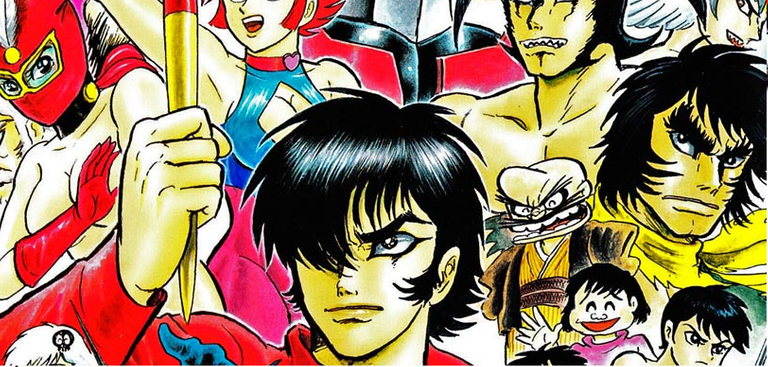
It's no surprise that I'm a big fan of Go Nagai, the man behind such classics like Devilman, Mazinger and Cutie Honey. He wasn't just ANY manga artist, he defined the 70s by re-inventing the wheel and pushing the boundaries of what was acceptable then. I have consumed Go Nagai manga as they were being scanlated or officially released well over a decade now, and it's fair to say that my adoration of him wasn't healthy, but warranted.
Finally, in 2019, Gekiman is well on its way on being fully scanlated. With 1 volume out, I hope the scanlator can keep going on and finish the whole thing. So what's it's about? Gekiman! is the manga autobiography of Go Nagai under the fictional pseudonym, Geki Nagai and his struggles during his early days as a manga artist. Along the journey, he also details the creative process of his hit manga, Devilman while also redrawing key panels with his new refined artwork.
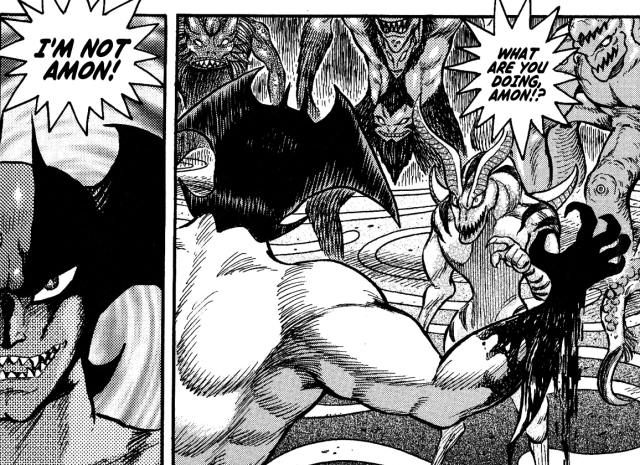
So where does the story of Gekiman leads us? Well, it starts with Geki talking about how Harenchi Gakuen (Translated to Shameless School in English), his first hit as a manga artist brought him tons of success. While he's grateful for his manga's popularity, ever since Harenchi Gakuen ended, he's been asked by various people in the industry to only create manga like it, and nothing else. You know how nowadays, comedians find it hard to star in serious films and be taken seriously? This was a bit of the case with Nagai.
The story of Harenchi Gakuen is about teachers, and students of a weird school all being lecherous pervs to each other in a comedic fashion. In other words, it was a sexy gag manga that young boys who hadn't yet reached puberty yet found enticing, for good reasons. The manga became such a sensation among them that they propelled the series to the number 1 spot of the newly formed Weekly Shonen Jump magazine at the end of the 60s. That was great for his career and all, but Nagai wasn't satisfied with just doing gag.
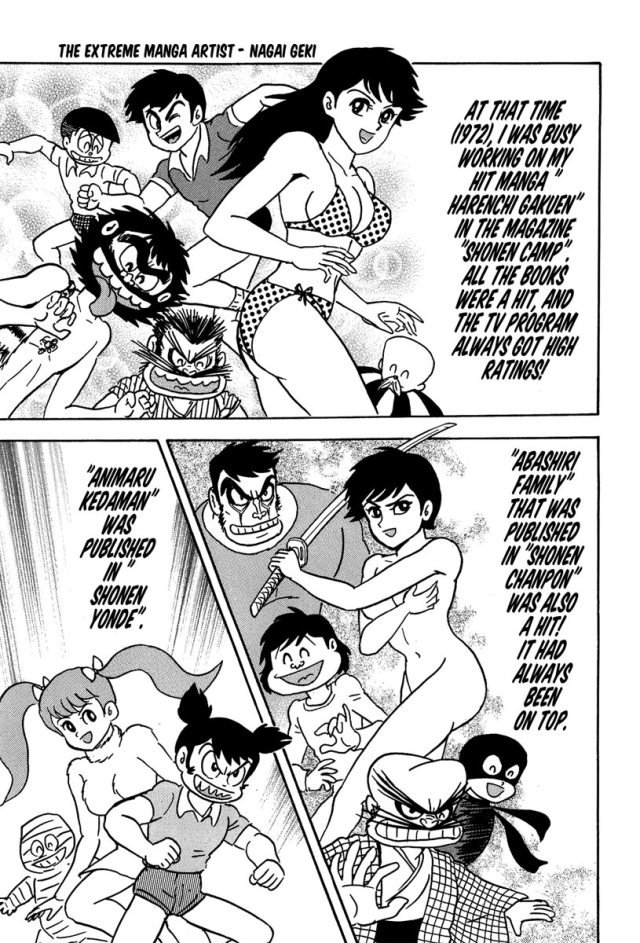
Obviously, such manga like that of Harenchi Gakuen targeted to children would cause the furor of parents nation-wide, and it did. The Japanese PTA (Parents Teachers Association) were especially aggressive towards Go Nagai. They branded him a public enemy and a nuisance to Japanese society. Words can only do so much, so they also took some serious actions and managed to get his manga banned in bookstores in some regions, to the dismay of many young readers around the country.
In an attempt to defend his free expression against the overbearing censors, Nagai had all of his major characters killed by the PTA's military forces in the story, in what would be famously known today as the Harenchi Great War. What was once a sexy and light gag manga quickly became the poster child of anti-censorship and a symbol for an entire generation of Japanese children who also understood what was going on. This drastic change in tone from comedy to tragedy would also define Nagai and his manga, decades down the line.
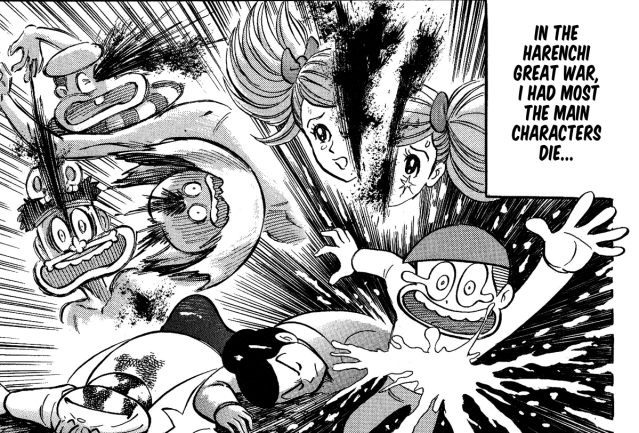
But additionally, this bold move also demonstrated that he could do way more than just gag. In Gekiman, Nagai talks about his other more serious manga attempts like the demon-inspired Mao Dante, and his Oni one-shot, which both showed the full potential of his story-telling abilities. These works, in addition to the Harenchi Gakuen all gave him the experience to kickstart Devilman.
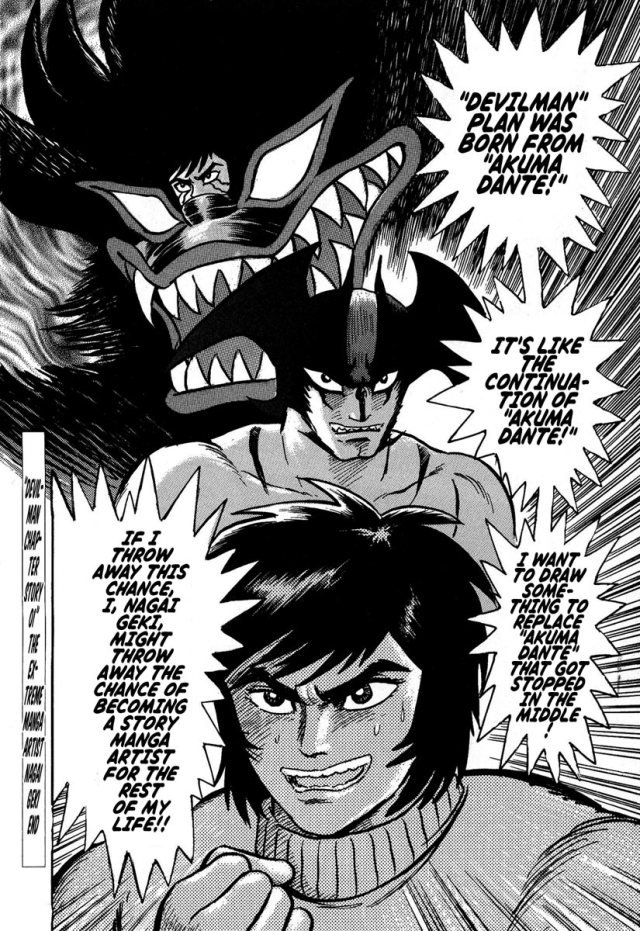
What's even bolder beyond the storytelling shift, is that the young upstart also had to drop several of his other titles, mostly gag such as Omorai-kun to focus on Devilman. This decision also affected everyone at Dynamic Pro, the company he founded with his brothers to help him legally manage his works. His editor was pissed, and his assistants had to switch gears to focus on the new work. In other words, it wasn't the easiest decision he could have taken. However, he also had to show that he could do story manga well, and Devilman was a major step towards this goal.

The rest of the volume goes knee-deep into Devilman's creative process while retelling the story with updated artwork from the man himself. Every step he took on the way is documented here; how he came up with the Sabbath scene, how Sirene's design was finalised, Ryo's original purpose etc. There's a lot to unpack, and the more you read through, the more you realise that while Nagai worked really hard, he was hardly a one-man show.
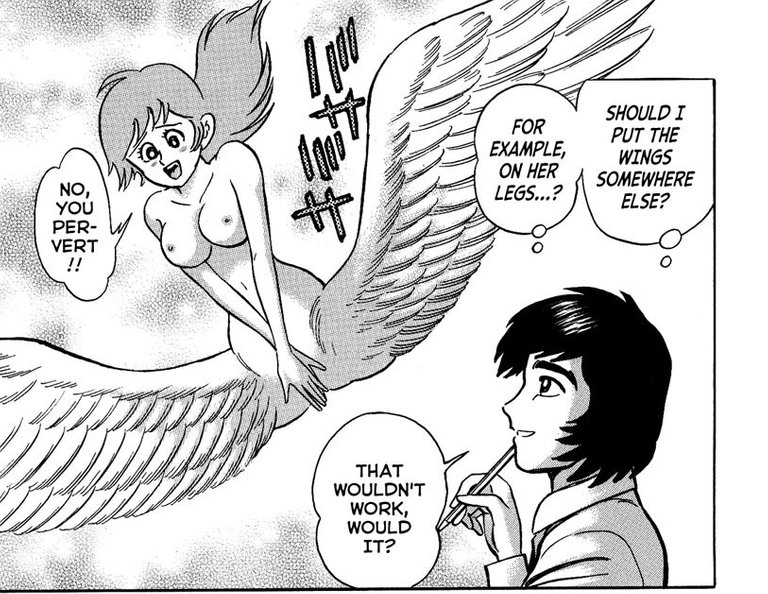
The young Go along with his brothers, assistants, editors were all behind his success. With this manga, it was clear that he wanted to show his appreciation for all of the folks he had to work with; The producers at Toei who adapted his work into anime, the editor who dropped him off after work, his brothers who he relied often on for advice, his sensei, the late Shotaro Ishinomori who taught him the ropes, that one special assistant, Ken Ishikawa who he badly missed at a crucial time; Gekiman is more than just a self-aggrandising work, it's a honorary tribute to all those who have contributed to the success of his career and helped him become the manga juggernaut that he is today.
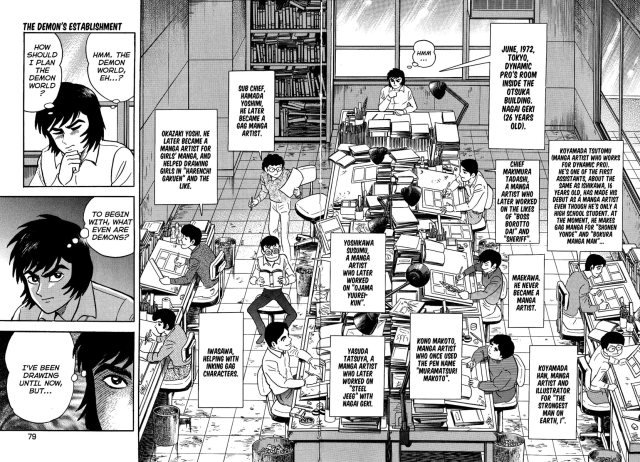
Perhaps, the greatest takeaway this manga could offer is to give the reader an appreciation of the amount of work required to pursue and achieve one's dream. Nagai at no point was financially stable since all his hard-earned money went to his staff. He could have done gag manga for the rest of his career and would have remained relatively successful, but instead, he pushed himself both physically and mentally to his limits to really write and draw the kind of manga he always to do, as opposed to what the manga industry had in store for him.
Nowadays, Japan recognises Nagai as more than just a gag manga artist today thanks to the Devilman manga, but it was only thanks to last year's adaptation, Devilman Crybaby that his talent finally got recognised in the West (Sans Italy, because he was always famous there). Previously, the kind of titles from Nagai that were brought over was quite fun, like Kekkou Kamen, but they were exactly the kind of gag stories that he worked hard to get away from. It was either that or the ill received Violence Jack OVAs, which painted Nagai as a thoughtless creator who only thirsted for violence.
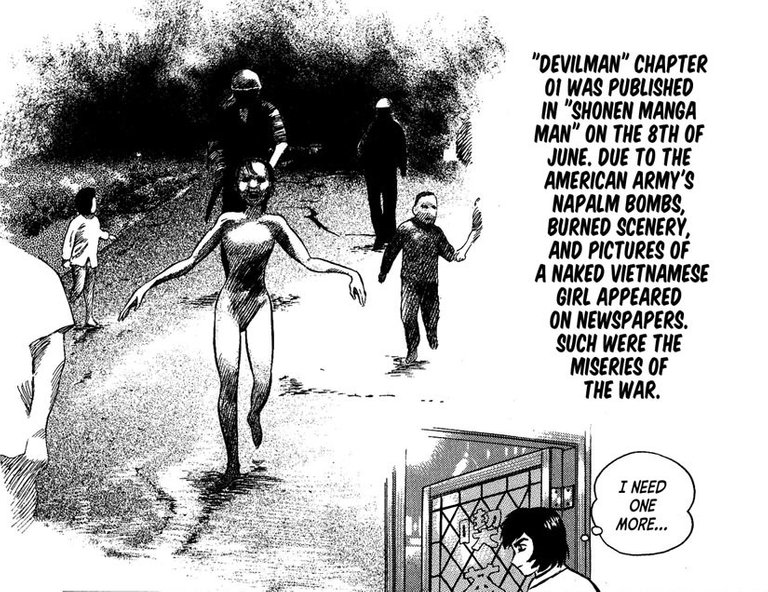
Sure, his manga might look crazy and thoughtless to the average newcomer to his works, but as Gekiman demonstrated, Nagai had total control all the way. Yet, he jokingly said once that people thought he was doing drugs when he was drawing Devilman, but no drug can explain what this piece of work came to mean to such a vast array of people all over the industry.
Posted from my blog with SteemPress : https://cryptotsuki.com/2019/01/07/gekiman-volume-1-review/
Hi @eaudebla!
I am a curator for AkibaSteem and this is just to let you know that I upvoted your post:
Also, feel free to join our community on Discord!

https://discord.gg/7JQruwm